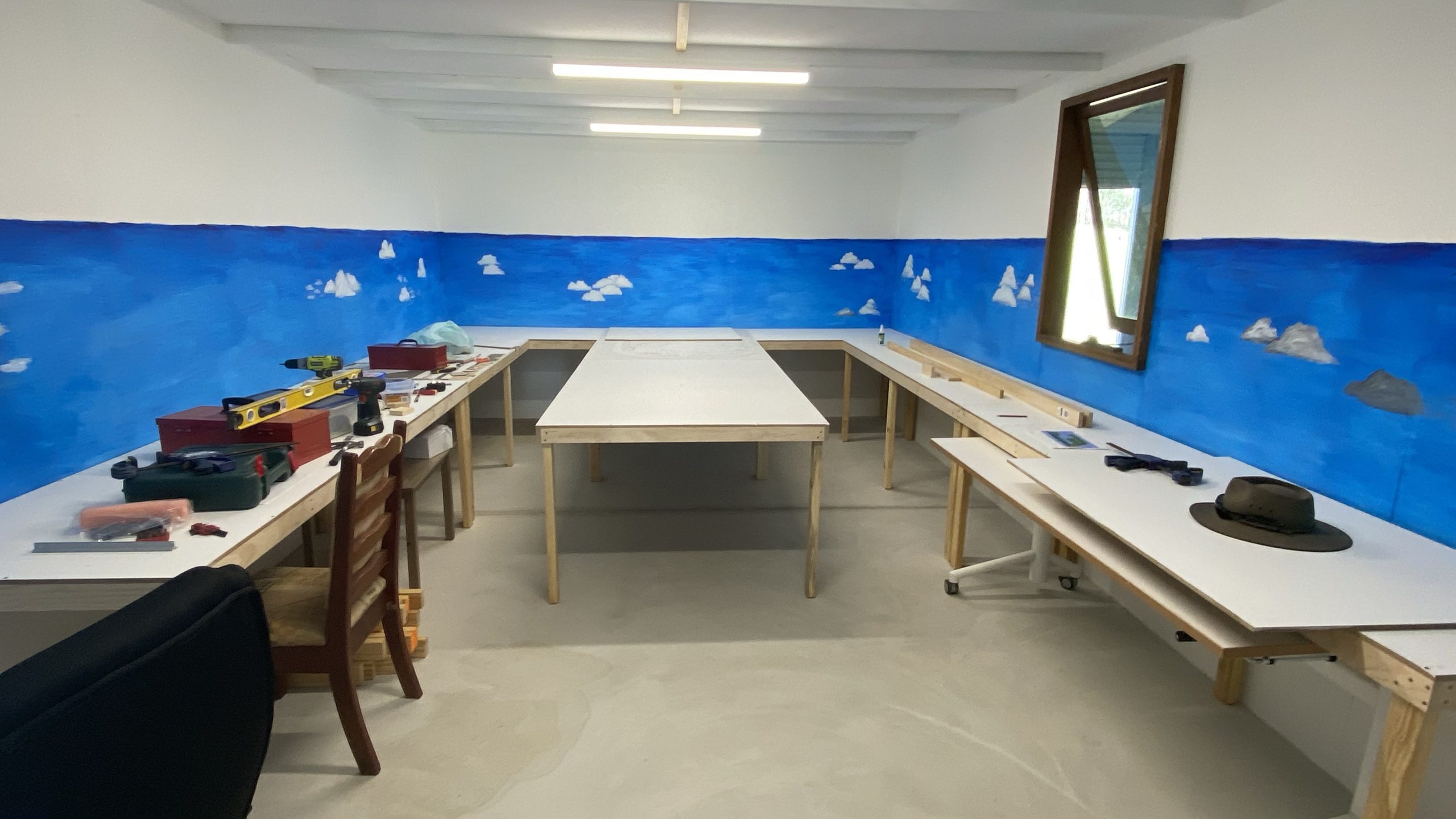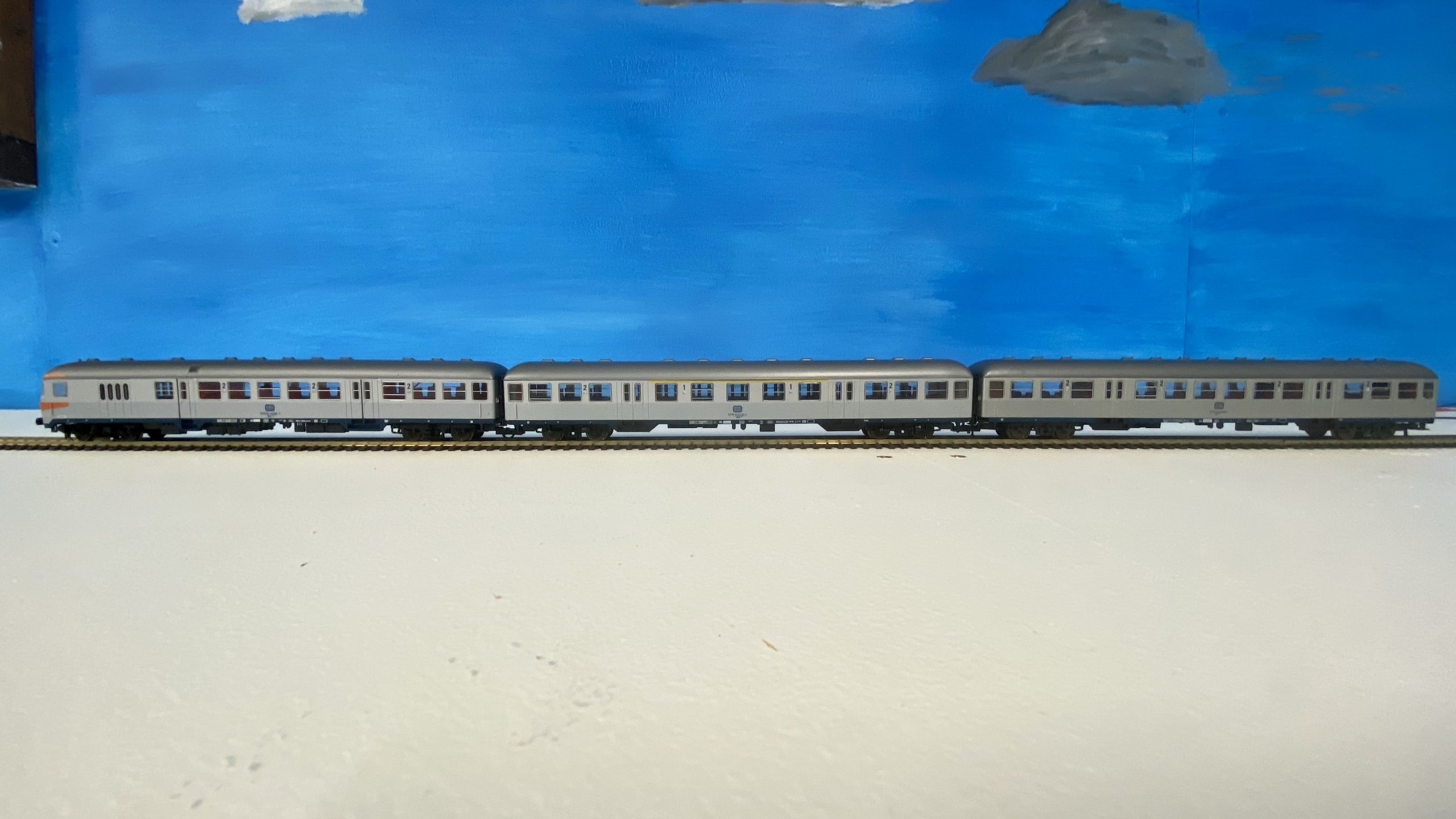2021 is behind us by over a month already It’s hard to believe how fast such a busy and eventful year can end.
The bad news is that not a whole lot has happened in the train room this past year. For financial reason, the construction of the new layout was deferred early in the year. In the meantime, the previous layout was reassembled so we could at least run trains. The train room was painted, and my wife created a scenic background running around the wall, which can be seen in the photos below. We will likely add some detail to that as we determine where certain parts of the landscape are going, but I think it’s come out great.
Towards the end of the year, we finally started building the bench work for the new layout. This meant that once again, the old layout was dismantled, this time irreversibly, because its parts were to be integrated into the new layout. Construction was done the same way as on the old layout – MDF tops with dressed pine frames and pine studs for legs. We built individual pieces which were then joined into the whole thing – starting from the far left corner, this required some intense tetris-like shifting of pieces at times. The progress is shown in the below photos.




Track laying will start soon – watch this space.
A new train project has finally come to fruition, after several months and a few mishaps. The plan was for an Era IV West German push-pull commuter train, using passenger cars known as n-coaches, colloquially called ‘Silberling‘ for their originally unpainted, brushed stainless steel body. I wanted at least two cars in the train, one of them was to be a cab control car for the push-pull operation.
Acquiring the coaches was the easy bit, but not without its pitfalls. I quickly found three suitable cars for acceptable prices, the second hand market for cars in 1:100 length scale is quite well stocked. I prefer the shorter cars, they’re usually cheap and still look good enough. Sure, current models have more detail, but have you seen the prices of those things?
The three cars arrived, and I fairly quickly noticed that something was off. Two cars were as I expected, a cab car and a mixed class coach, with blue frames and blue lettering, but the third car, a second class coach, had a black frame and black lettering. The roof shape was also different, as was the road number. After a bit of research, it turned out that I had acquired a Roco 4265 instead of a 4265S, the latter being the desired model. I did not know that the S in the item number would make such a difference. But I also had no-one but myself to blame. It took a bit longer for me to find the correct car in acceptable condition, but I got there.



The cab car is a Roco 44220A, it came as new in its original box with working lights and complete detailing parts. I would have liked to get my hands on a Fleischmann 5140 with the blue/beige scheme on the cab, but those are rare. The photos below show the full setup.




The loco was another adventure. I had my heart set on the BR 220 in its rarely used blue/beige livery as opposed to the original red/grey colour scheme. It had to be a 220 instead of its evolution, the BR 221, because the later prototype did not have push-pull control, and there are times when I like to be a bit prototypical with my trains. What I didn’t realise is that not a lot of H0 models of a blue/beige BR 220 were made. The most common one is a Roco model from the 1990s, but those are not yet DCC-ready and I was not up for the somewhat complex modifications needed to make it so. ESU only recently released a second run of their BR 220, a beautiful looking model with a lot of detail, with sound and smoke – and way outside of my budget.
As a second choice, I would have been happy enough with a BR 212 in the blue/beige scheme, but those are not exactly easier to find. No current model was available at the time. Eventually I managed to find an as-new unit of a Piko BR 220 originally made in 2014, which ticked all the boxes – my preferred variant, with a modern digital interface.




Lastly, the loco and the replacement coach should have been here before Christmas, but in spite of a significant postage charge which should have guaranteed priority shipping, the parcel from Germany to Australia took two months to arrive. The more annoying bit was that for most of that time, there was no visible movement on the parcel tracking. Oh well, the things we put up with in times of Covid…
Pingback: 2022 In Retrospect – Making Tracks